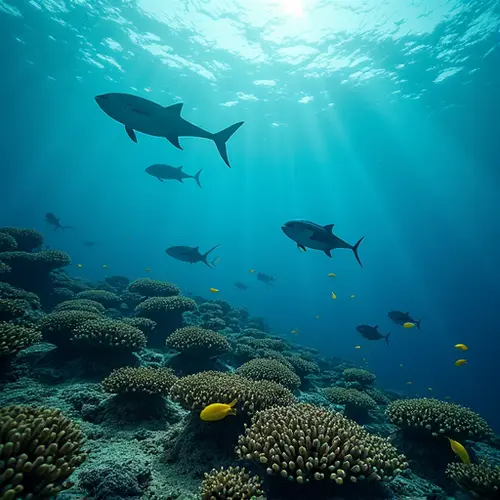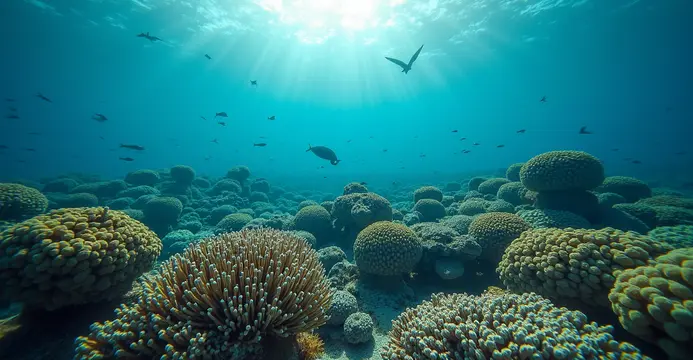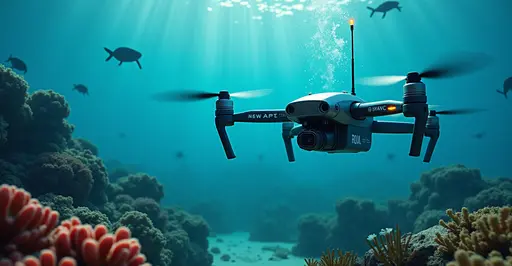
Breakthrough in Coral Conservation Science
Scientists have achieved a major breakthrough in marine conservation by successfully using CRISPR gene editing technology to create coral strains with enhanced resistance to bleaching. Laboratory trials conducted by an international research team have demonstrated that genetically modified coral larvae can survive in water temperatures that would normally cause catastrophic bleaching events.
The Science Behind Coral Resilience
The research focused on the Heat Shock Transcription Factor 1 (HSF1) gene in Acropora millepora coral from Australia's Great Barrier Reef. Using enhanced CRISPR-Cas9 systems, scientists were able to modify this key gene that plays a crucial role in heat response mechanisms. When water temperatures were raised to 34 degrees Celsius, the genetically modified coral larvae survived while unmodified specimens perished.
Dr. Phillip Cleves from Stanford University, who pioneered the initial CRISPR work in corals, explains: "This isn't about creating super-corals to populate the oceans. It's about understanding the basic mechanisms of coral biology so we can better predict and potentially mitigate the effects of climate change."
The Urgent Need for Coral Protection
Coral reefs are among the most vulnerable ecosystems to climate change, with rising ocean temperatures causing widespread bleaching events. Since the late 1990s, coral reefs have experienced devastating bleaching that turns vibrant reef systems into barren underwater landscapes. Approximately 27% of the global reef ecosystem has already been lost to a combination of climate change and human activities.
The Great Barrier Reef alone has suffered multiple mass bleaching events in recent years, with scientists warning that time is running out for these critical marine habitats that support approximately 25% of all marine species.
Technical Challenges and Breakthroughs
Working with corals presents unique challenges for genetic research. Most coral species, including Acropora millepora, breed only once or twice annually during specific lunar cycles. Researchers must carefully time their experiments to coincide with these brief spawning windows when corals release their sex cells into the ocean.
The CRISPR technology is injected into coral zygotes during the narrow time window before cell division begins. This precise timing allows researchers to introduce genetic modifications that can be passed to subsequent generations.
Ethical Considerations and Future Directions
Scientists emphasize that the goal is not to create genetically engineered super-corals for widespread release, but rather to understand natural genetic variations that could bolster coral survival. The research helps identify which genes are critical for heat tolerance, information that can inform conservation strategies and help predict how coral populations might adapt to changing conditions.
Future research will focus on genes involved in coral-algae symbiosis, skeletal growth, and disease resistance. The ultimate aim is to develop comprehensive conservation strategies that combine genetic understanding with traditional reef protection measures.
Global Collaboration for Reef Survival
This breakthrough represents a collaborative effort between Stanford University, the University of Texas-Austin, and the Australian Institute of Marine Science. The research has been funded by the Simons Foundation, National Science Foundation, and various marine conservation organizations.
As Dr. Cleves notes, "This is an all-hands-on-deck moment for coral conservation. If we can start classifying what genes are important, then we can get an idea of what we can do to help conservation, or even just to predict what's going to happen in the future."
The research findings have been published in the Proceedings of the National Academy of Sciences and are contributing to a growing body of knowledge about coral resilience in the face of climate change.

 Nederlands
Nederlands
 English
English
 Français
Français
 Deutsch
Deutsch
 Español
Español
 Português
Português








